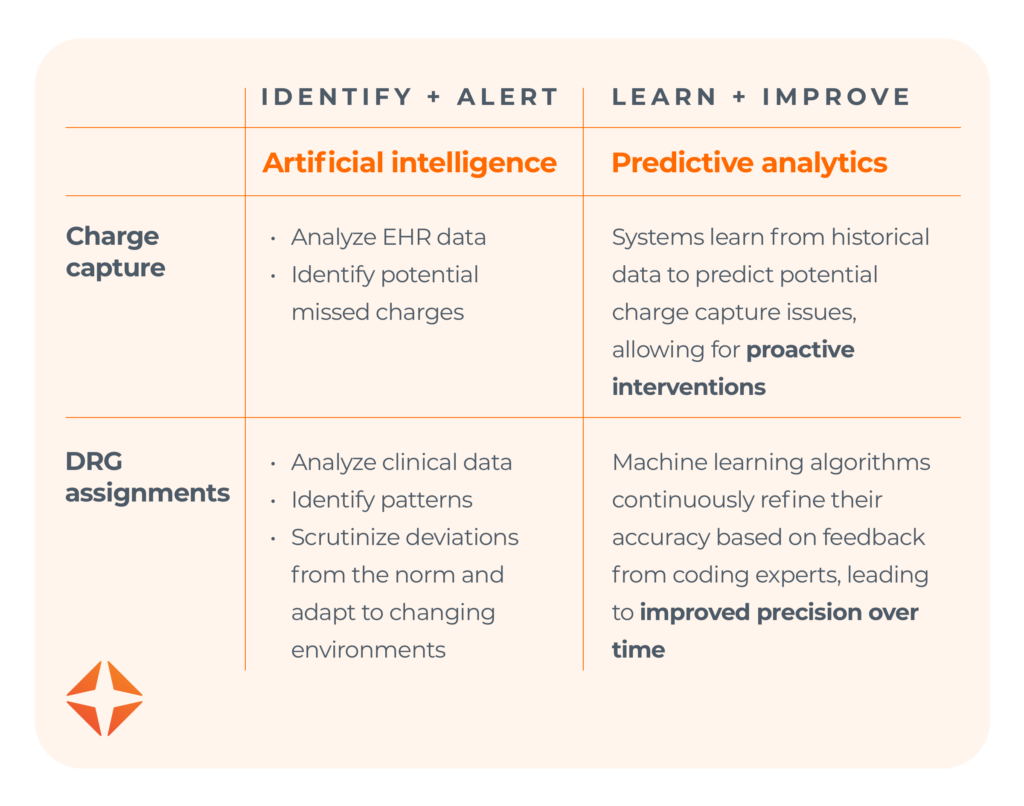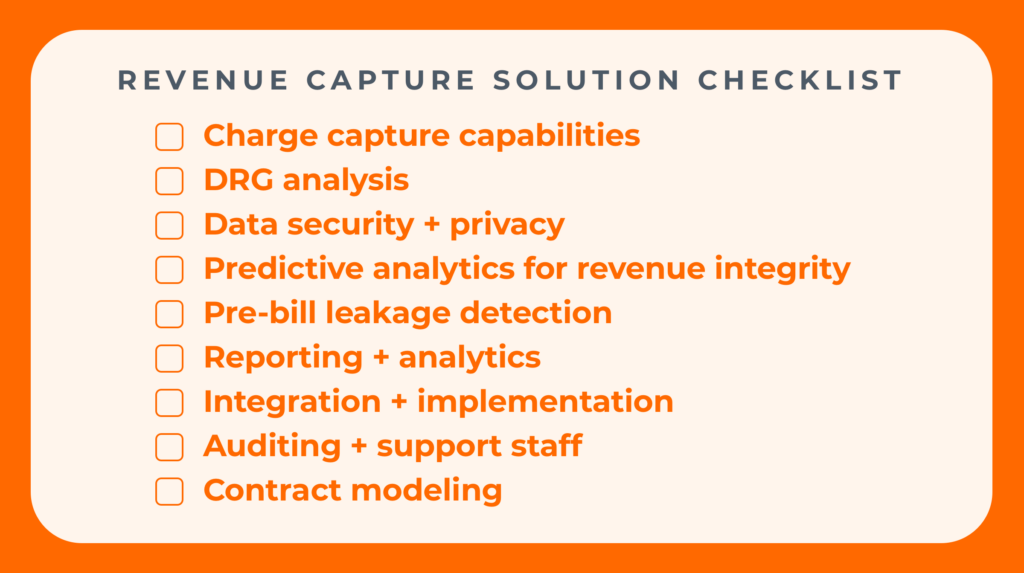In healthcare finance, effective revenue capture separates successful organizations from those that simply survive.
Providers are losing money they’re rightfully owed because of coding errors, missing charges, underpayments, and other mistakes. So, how do we prevent this?
First, we identify two elements that have a profound impact on revenue but aren’t always prioritized:
- The integrity of charge capture (securing revenue for services provided), and
- The precision of Diagnostic Related Group (DRG) assignments.
Why charge capture + DRG accuracy are critical
The proof is in the numbers. According to HFMA data, hospitals in the U.S. lose roughly 1% of their net revenue to charge capture mistakes. That means, for example, that a hospital with an annual net revenue of $750 million could lose $7.5 million to charge capture errors alone. On top of that, DRG inaccuracy can decrease reimbursements, and may even trigger audits and penalties.
Taken together, it’s easy to see why revenue capture is a challenge — but also an opportunity.

When organizations optimize charge capture and DRG assignments, they boost financial performance, protect their bottom line, and establish a cycle of continuous improvement that will keep delivering in the future.
The right revenue capture strategies, paired with artificial intelligence (AI) and predictive analytics, can help organizations:
- Enhance revenue
- Proactively address problems
- Deliver better patient care
How do you maximize revenue capture? Use predictive analytics + AI
Today, predictive analytics and AI are game changers in healthcare revenue integrity. By leveraging historical data, these systems can anticipate potential revenue leakage points and suggest preventive measures.
For example, in the realm of denial prevention, predictive models can analyze data and identify patterns that lead to denials. Then, when that pattern occurs again, software can flag these issues so corrections can be made before submission.
The same principles can be applied to charge capture and DRG assignments.

Charge capture and DRG accuracy are more than just steps in the revenue cycle; they are its pillars.
Fostering a culture that prioritizes both using technology — especially AI-driven solutions and predictive analytics — is not only prudent but essential.
TAKING CHARGE OF CHARGE CAPTURE + DRG ACCURACY
9 checkpoints for an effective revenue capture platform
As healthcare finance evolves, organizations that embrace technological advancements will succeed in the era of value-based care.
When evaluating revenue capture solutions, make sure they check the following boxes to ensure you’re getting a comprehensive, effective platform.

1. Charge capture capabilities
- Integration with various EHR systems
- Analysis of EHR data to identify missed charges
- Automated alerts for staff to rectify errors promptly
- Customizable rules and workflows to match facility-specific requirements
2. DRG analysis
- AI-powered analysis of clinical documentation
- Integration with contract management engine to identify additional revenue opportunity
- Coding standards that ensure compliance
- Machine-learning algorithms that continuously improve accuracy based on expert feedback
3. Data security + privacy
- Robust data security measures to:
- Protect sensitive patient information
- Ensure compliance with HIPAA regulations
- Regular security audits and penetration testing to identify and address vulnerabilities
4. Predictive analytics for revenue integrity
- Analysis of historical data to identify patterns and trends impacting revenue
- Ability to predict revenue leakage points driving actionable insights for:
- Proactive revenue optimization
- Prioritization of high-risk claims
5. Pre-bill leakage detection
- AI-powered identification of errors and inconsistencies in claims before submission
6. Reporting + analytics
- Comprehensive reporting and analytics capabilities for tracking
- Customizable dashboards and reports for monitoring progress
- Actionable insights for optimizing performance
7. Integration + implementation
- EHR-agnostic integration with existing facility systems and workflows
- Minimal disruption during implementation
- Cloud-based platform for scalability
- Regular updates, comprehensive training, and support for successful adoption
8. Auditing + support staff
- Dedicated auditing team to:
- Confirm findings and provide expert level feedback
- Ensure accuracy
- Provide guidance and support
- Collaborative approach to resolving auditing discrepancies
- Proactive monitoring and alerts for potential risks or issues
9. Contract modeling
- Integration of the facility’s unique payer contract details to:
- Support accurate net patient revenue calculations
- Ensure fair and accurate reimbursement
By considering these key areas, organizations can select a revenue capture solution that will leverage their data and contract details to build custom models and optimize financial performance. That will lead to more accurate predictions, improved net patient revenue calculations, and, ultimately, better financial outcomes.
Want to learn more about charge capture + DRG accuracy?
See how Waystar’s Revenue Capture suite delivers an average 4:1 ROI.



